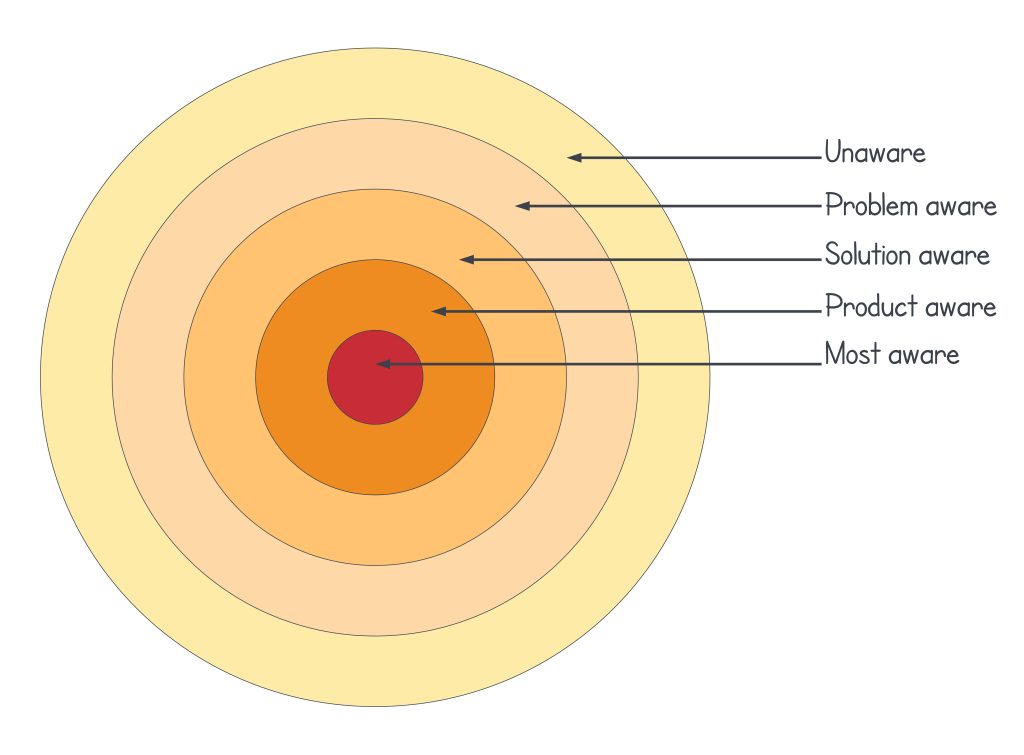UPDATED APRIL 27, 2024
Or, rather, how blogging should work
This post should probably be called ‘How should blogging work for your business?’
Because for many businesses, blogging doesn’t work.
If blogging hasn’t worked for you, that’s probably because you’ve been doing it wrong. And if you’ve been doing it wrong, that’s probably because you don’t understand how it’s supposed to work.
In this post, I’m going to take you through some of the main ways your blog should be working for your business. Because when you understand how it’s supposed to work, you can apply those principles to your own blog and start getting better and more consistent results.
What is a business blog?
Okay, let’s start with the basics.
A business blog is an inbound marketing platform that’s placed on a company’s website with the aim of attracting potential customers to the website and improving the website’s SEO.
The company posts regular content onto the blog, usually in the form of articles. These articles are written to match the interests of the target audience and allow the company to rank for more keywords on Google.
How does blogging work to attract visitors?
Your blog content should attract your ideal customers to your website, like moths to a lightbulb!

To attract your ideal customers to your website, you need to create the content those potential customers are searching for online.
One of the reasons businesses fail at blogging is that they don’t understand this basic principle — and they’re posting the wrong kinds of content.
What is the wrong kind of content?
The wrong kind of content is anything your audience isn’t looking for. Here are some examples.

❌ Content that satisfies your objectives
This is a mistake a lot of businesses make when they write content. Because it seems natural to write what you want your audience to read, doesn’t it?
But this kind of content won’t work to bring in new business, because it’s not what your target audience is searching for online. Your content should be created for your target customer to find, so it needs to satisfy their objectives — not yours.
❌ Aimless content
If you want your content to work for you and attract your ideal customers to your website, you need to have a clear strategy and a solid understanding of what you’re trying to achieve.
If you don’t have a plan, your content will have no clear direction. And it will be a far cry from the informative, inspiring and helpful content your audience wants to see.
❌ Irrelevant content
Your content should be relevant for your industry and your ideal customers. If it isn’t, people aren’t going to be searching for it and they’re definitely not going to be reading it.
❌ Company news
Company news is usually self-promotional and might include articles about:
- People you’ve hired
- Contracts you’ve won
- Trade shows you’ve attended
- Initiatives you’ve started
- Charity work you’ve done.
News like this will be of interest to your shareholders, investors, job candidates who are considering working with you — and, possibly, your employees — but not your ideal customers.
If you’re going to post company news, it should be kept separate from your blog content — either in a dedicated news section on your website or in your newsletter.
❌ Sales content
If you’re using your blog to sell, you’re kinda missing the point.
Sales and service pages are for selling. They’re written specifically for prospects who are almost ready to buy.
People reading your blog posts aren’t looking for a sales pitch. They’re looking for answers, information, advice and inspiration — and that’s what they need from you.
If you’re trying to sell to them rather than giving them what they need, you’re probably driving them away.
❌ Copycat content
If you’re producing content that’s just saying what everyone else is saying, there’s not much point in that. People are looking for original content and different points of view.
To create more original content, you need to bring your own expertise, insights and perspectives to the table.
❌ Unoptimised content
If you want your target audience to find your content using organic search, you need to make sure it’s optimised for the search engines. Without SEO, there’s a high likelihood it won’t appear in the search results.
What is the right kind of content?
The right kind of content is the content your ideal customers want to see from you. This is the kind of content that will attract them to your website. Here are some examples.

✅ Information your ideal customers need
For example:
- “Educational board games for young families”
- “Best apps for learning a new language”
- “Fastest way to revise for an exam”
- “What to pack for a mountain hike”
✅ Questions your ideal customers are asking Google
For example:
- “When is the best time to see the Northern Lights?”
- “Why is time management important?”
- “Can dogs be vegetarian?”
- “What is a heat pump?”
✅ Things your ideal customers want to achieve
For example:
- “How to improve my website”
- “How to brew my own beer”
- “How to get more clients”
- “How to unblock a drain”
✅ Problems your ideal customers are having
For example:
- “Computer won’t turn off”
- “Damp patch on ceiling”
- “Brittle fingernails”
- “Dripping tap”
How does blogging work to extend reach?
Your website can only do so much in terms of attracting customers, because it’s targeting people who already know what they’re looking for. These people are part of your target market, but they’re not the only people who might buy from you.
There will be untapped sections of your market who might buy from you, but don’t yet have the awareness they need. Content allows you to reach those people and give them that awareness.
Eugene Schwartz’s Five Levels of Awareness
Legendary copywriter, Eugene Schwartz, identified five levels of awareness. A good content strategy can target at least four of them — and possibly even all five.
You can see the five levels of awareness in the graphic below. The centre of the circle represents the warmest leads, moving to the coolest leads on the outer edge.

Let’s look at each level of awareness and what it means, starting with the people who are least aware.
Unaware
These people don’t realise they have a problem, so they’re unlikely to be looking for a solution. This makes creating content difficult in most cases — but it’s not always impossible.
Problem aware
These people know they have a problem, but they don’t know if there’s a solution. When they search for the problem they’re having, your content can show them you have what they need to solve it.
Solution aware
These people know they have a problem and what the solution might look like, but they haven’t found it yet. Your content can show them you have what they’re looking for.
Product aware
These people know about you and your product/service, they just don’t know if it’s right for them yet. Your content can persuade them that it is.
Most aware
These people know all about you and your product. They’ve probably bought your product already and may have recommended it to others. You can create ongoing content to help these people get the best out of the product they’ve paid for and introduce them to complementary add-ons and upgrades.
Writing for different awareness levels
You can use your content to target the audiences at each level and increase their level of awareness to a point where you can sell to them.
Here’s an example of how that might work in practice.
Let’s say you make wood-fired outdoor pizza ovens. How might you reach more of the people who would potentially buy one from you using these awareness levels as a start?

🍕 Unaware
Likes eating outside, but doesn’t know you can make pizza in your garden.
Possible search: “Outdoor cooking equipment”
Possible blog title: “Why pizza ovens are the next big thing in outdoor cooking equipment”
🍕 Problem aware
Likes Italian pizza and wants to make it at home but doesn’t know how.
Possible search: “How to make proper Italian pizza at home”
Possible blog title: “How to make proper Italian pizza at home with the <Name> outdoor pizza oven”
🍕 Solution aware
Likes Italian pizza and knows that wood-fired outdoor pizza ovens are a thing.
Possible search: “Best wood-fired outdoor pizza oven”
Possible blog title: “Which is the best wood-fired outdoor pizza oven?”
🍕 Product aware
Knows they want a wood-fired outdoor pizza oven and want to know more about yours.
Possible search: “Is the <Name> outdoor pizza oven worth the money?”
Possible blog title: “Is the <Name> outdoor pizza oven worth the money?”
🍕 Most aware
Knows about your brand and has already bought your pizza oven.
Possible search: “Best recipe ideas for the <Name> outdoor pizza oven”
Possible blog title: “Best recipe ideas for the <Name> outdoor pizza oven”
And there you have it. With content, you can attract your ideal customers and people who aren’t ready to buy yet who are looking for information and impartial advice.
How does blogging work for SEO?

There’s plenty of talk about the benefits of blogging for Search Engine Optimisation (SEO). In fact, some SEO practitioners will tell you that blogging is exclusively for SEO.
But that’s not true.
And if you’re blogging for search engines rather than for your human audience, that might be where you’re going wrong. Because creating content that ranks is one thing — creating content your audience actually wants to read, and might act on, is something else entirely.
So how does blogging help your SEO?
There are three main ways blogging helps your SEO.
1. It gives you a reason to update your website
Updating your website regularly shows Google your site is active. And Google likes websites that are active.
2. It gives you more chances to rank
A website can only rank for so many keywords. But if you have a blog, you can target lots more keywords, which gives you lots more chances to rank — and lots more chances to get visitors to your website.
3. It demonstrates your E-E-A-T
Websites filled with lots of good-quality content are demonstrating Experience, Expertise, Authority and Trustworthiness (E-E-A-T), which are four of the ranking factors set out by Google itself.
A website that demonstrates E-E-A-T well is more likely to have a higher Domain Authority (DA). And a high DA improves a website’s chances of rank higher. There are free tools you can use to find out the DA of your website. Your score will be between 1 and 100, with 100 being the best score.
We’ll break this down in the next section.
How does blogging work to demonstrate E-E-A-T?

E-E-A-T stands for Experience, Expertise, Authority and Trustworthiness. These are four of the ranking factors set out by Google — and they’re all important for your human audience, too.
How does blogging work to show Experience?
Your experience shows you’re experienced in your field. Maybe you’ve been in your industry a long time or maybe you have a wealth of knowledge gained through first-hand experience.
When you’re blogging, you can:
- Give answers and opinions backed by your experience
- Talk about how your industry has changed or evolved
- Interpret statistics and data with your unique insight
- Show how your experience has changed the way you do things.
How does blogging work to show Expertise?
When you show expertise, you give your audience confidence that you know what you’re talking about and that you’re a business they should pay attention to.
When you’re blogging, you can:
- Demonstrate your knowledge, competence and understanding
- Give expert tips, opinions and advice on industry matters
- Show you know and understand your ideal customers
- Give expert answers to to your audience’s questions.
How does blogging work to show Authority?
Showing authority positions you as a leader in your field. This means other people and businesses in your industry take their cues from you.
To write with authority, you need to combine your expertise with progressive thinking that pushes beyond the boundaries of your rivals, putting forward new ideas and creating new discussions.
Here are two effective ways to show authority in your blog content:
By being first
You keep abreast of all the developments in your industry, so you’re always among the first to post about the:
- Results of new studies and research projects
- Latest news and issues affecting your industry
- Innovations and advances in technology
- New methods, systems and processes
- Forthcoming legislation and new regulations.
By writing authoritatively on industry topics
When you write authoritatively, you:
- Assert your positions and opinions confidently
- Add value by including your experience and insight
- Unpack information and make it easy to digest
- Untangle complex issues, bringing clarity and reassurance.
But isn’t writing for rivals a bad thing?
Now, you might be thinking that going to all this trouble and writing content for your industry rather than your prospects doesn’t seem like a great idea. And that’s a fair point. Showing authority in this way might not be the way forward for every business.
But, if you can do it, it will make your content worth linking to — and backlinks are always valuable for SEO.
Quality content with backlinks will also win you favour with Google and will help to increase your Domain Authority (DA). This should make it easier for your content to rank highly — and more difficult for competitors to rank above you.
And if you’re an industry leader, that comes with a certain standing. In the long-run, it can help you secure bigger and higher paying clients who only want the best.
How does blogging work to show Trustworthiness?
Showing your trustworthiness is key for persuading prospects that yours is the company they should work with or buy from. And Google needs to see you’re trustworthy, too.
You want your prospects to be able to trust that:
- You understand their problem
- You can solve their problem
- You’re genuine, honest and decent
- You have their best interests at heart.
There are several ways to show trustworthiness in your blog content:
Be honest
You can show prospects you’re honest by:
- Being upfront about the downsides and limitations of your product/service
- Telling them why your product/service might not be right for them
- Recommending alternatives where they might be more suitable
- Managing expectations and being realistic about the outcomes.
Be valuable
The more value you can provide, the better. You can make your content valuable by being:
- Generous with your knowledge, tips and advice
- Concise and interesting rather than long and full of waffle
- More interested in helping your audience than promoting yourself
- More informative and illuminating — and less salesy.
Be credible
Showing credibility means:
- Creating your own original content and not copying others
- Backing up your statements and arguments with research
- Getting your research from official and original sources
- Citing your sources with a link — Google likes official links.
Be genuine
Staying true to yourself and your principles will help you attract more likeminded people. These people usually make the best customers, because your connection is based on shared values and interests.
To attract your ideal customers:
- Be genuine about who you are and what you stand for
- Don’t be afraid to show your personality and uniqueness
- Write conversationally, as though you’re talking to your readers
- Be consistent in your messaging and style.
Making blogging work for your business
You should now understand how blogging should work to:
✅ Help your audience
✅ Attract more people to your website
✅ Target the people outside your core market
✅ Improve your SEO and search rankings
✅ Show your Expertise, Authority and Trustworthiness.
3 Bonus tips
1. Add links to suitable blog posts from your other pages
We all have sections on our websites where we think some visitors might benefit more information or explanation. If you already have a blog article that gives that information, include a link to it on your page. If you don’t yet have a blog article like that, you can always create one.
2. Always include a Call to Action (CTA)
You never want to leave your reader with nowhere else to go, so include a CTA at the end of every post.
For the least aware prospects, that could be directing them to other blog posts where they can continue their reading.
For those with medium awareness, it could be a link to sign up to your mailing list. This will enable you to keep in touch with them and send content straight to their inboxes.
For the most aware prospects, it could be directing them to a sales or service page if you think they’re ready to buy.
3. Remember, not all blog posts have to be searchable
Not all the blog posts you create have to be found on Google. Some might contain supplementary information or content that’s just for the benefit of your visitors.
Having a blog means you can create a more distilled and powerful message on your main web pages, then extend that — with any additional information people might need — in the form of blog articles.
Need help with your blog?
Blogging isn’t for everyone.
It takes up valuable time and requires endless ideas and research.
If you understand the value of blogging, but you don’t enjoy writing or don’t have the time to see it through, why not think about outsourcing some — or all — of the process to me?
I’m Jenny Lucas, a content strategist and writer based in Leicester, UK. And I’ve been making blogging work for businesses since 2008.
I can just help with the strategy side, creating a content plan with ideas and SEO keywords. Or I can do all that and write the content for you, too.
For more information, check out my Content Writing service page or Get in touch to see how I can help you.

You might also like…



